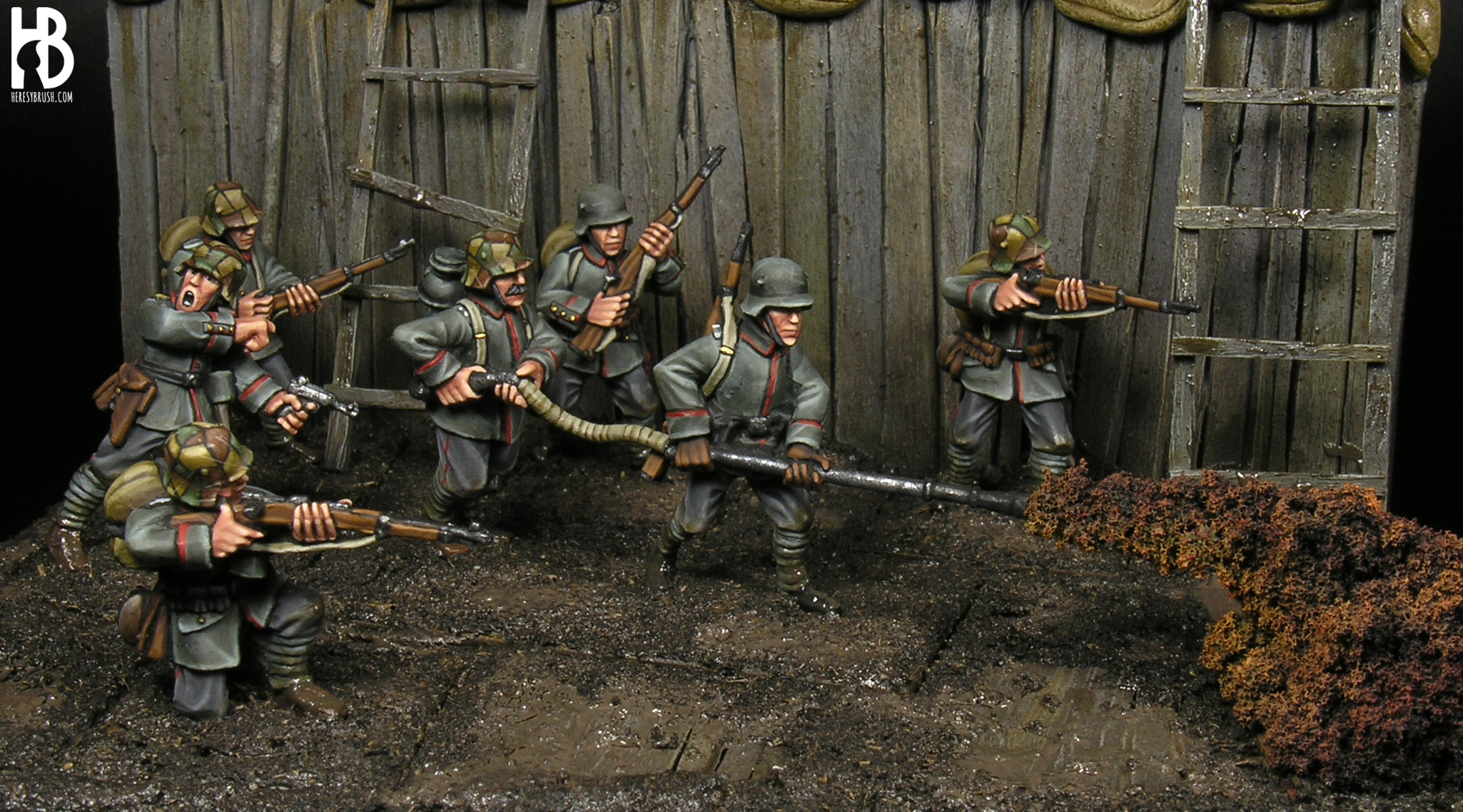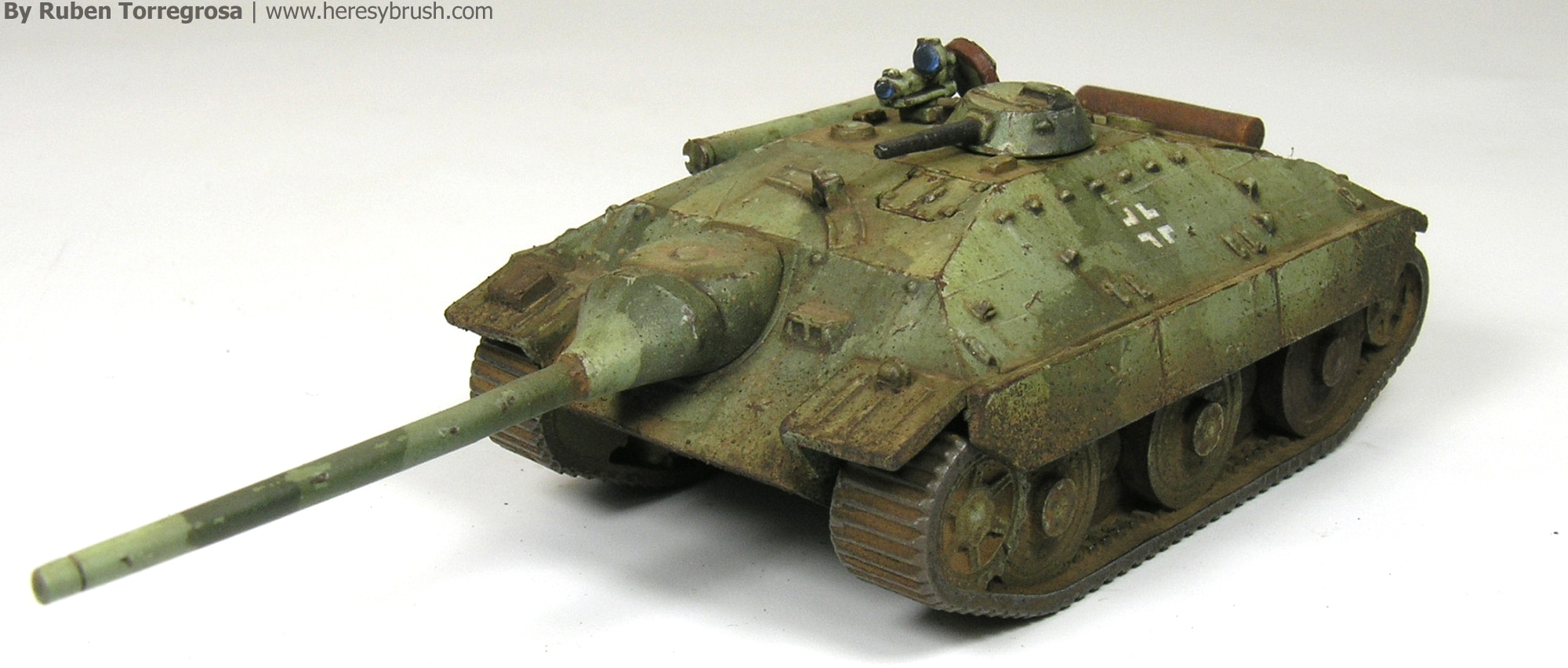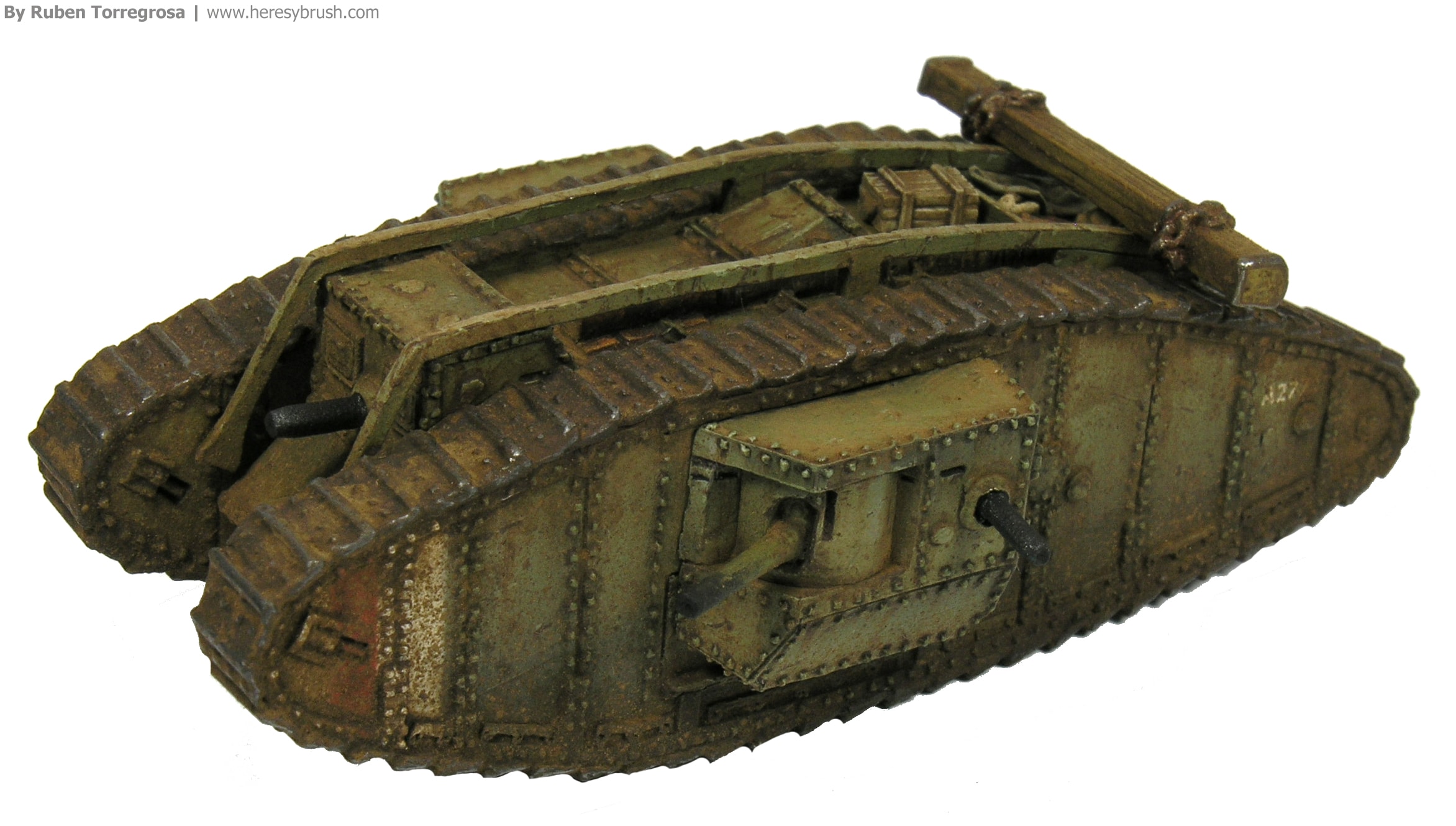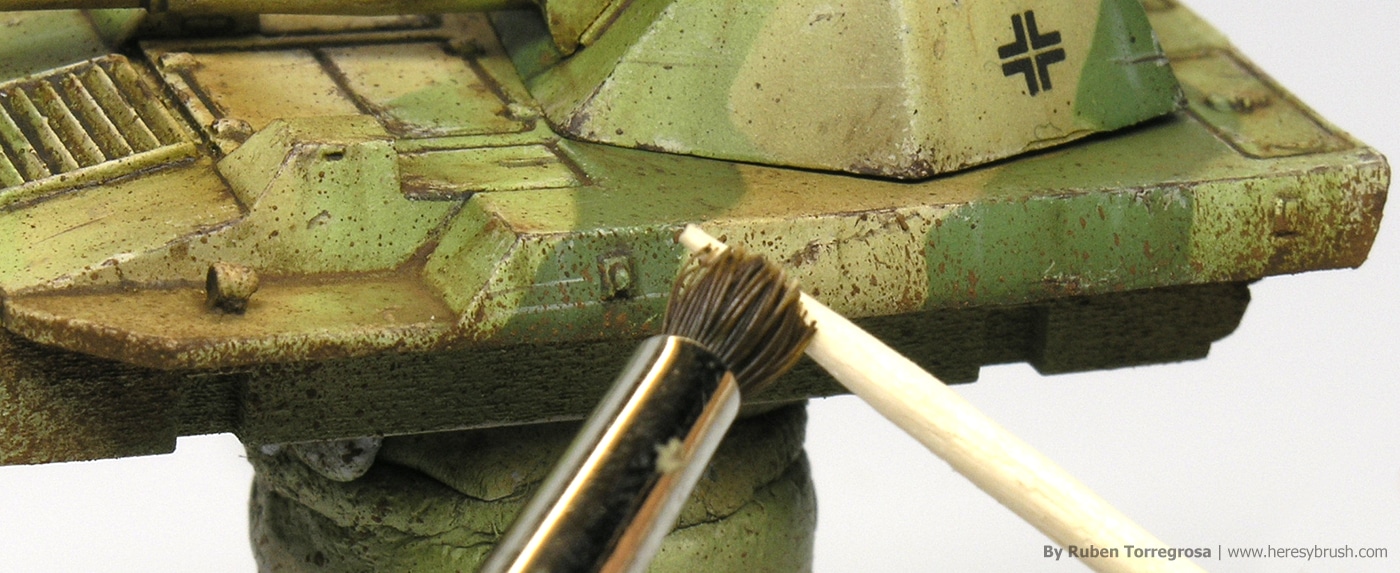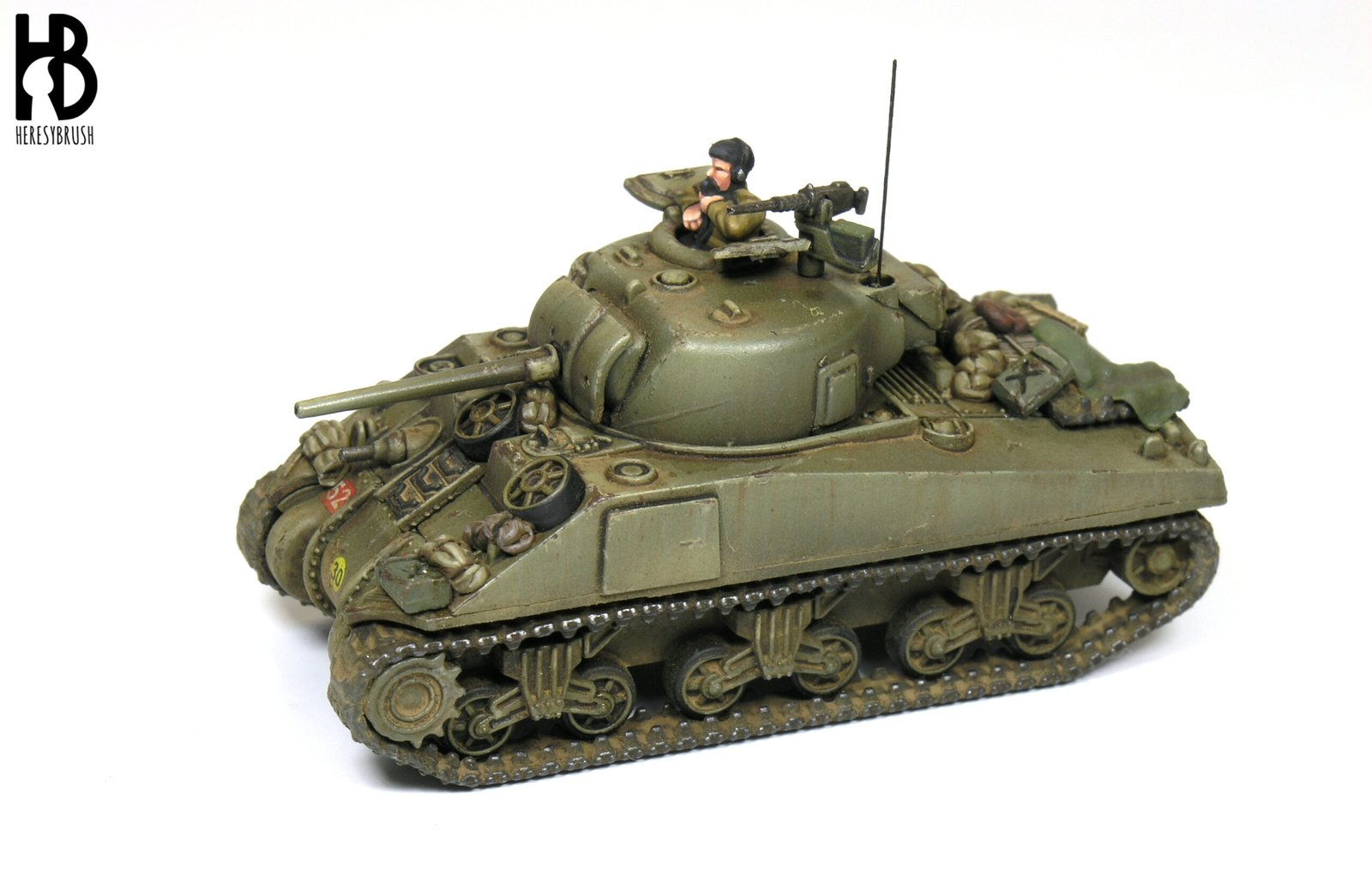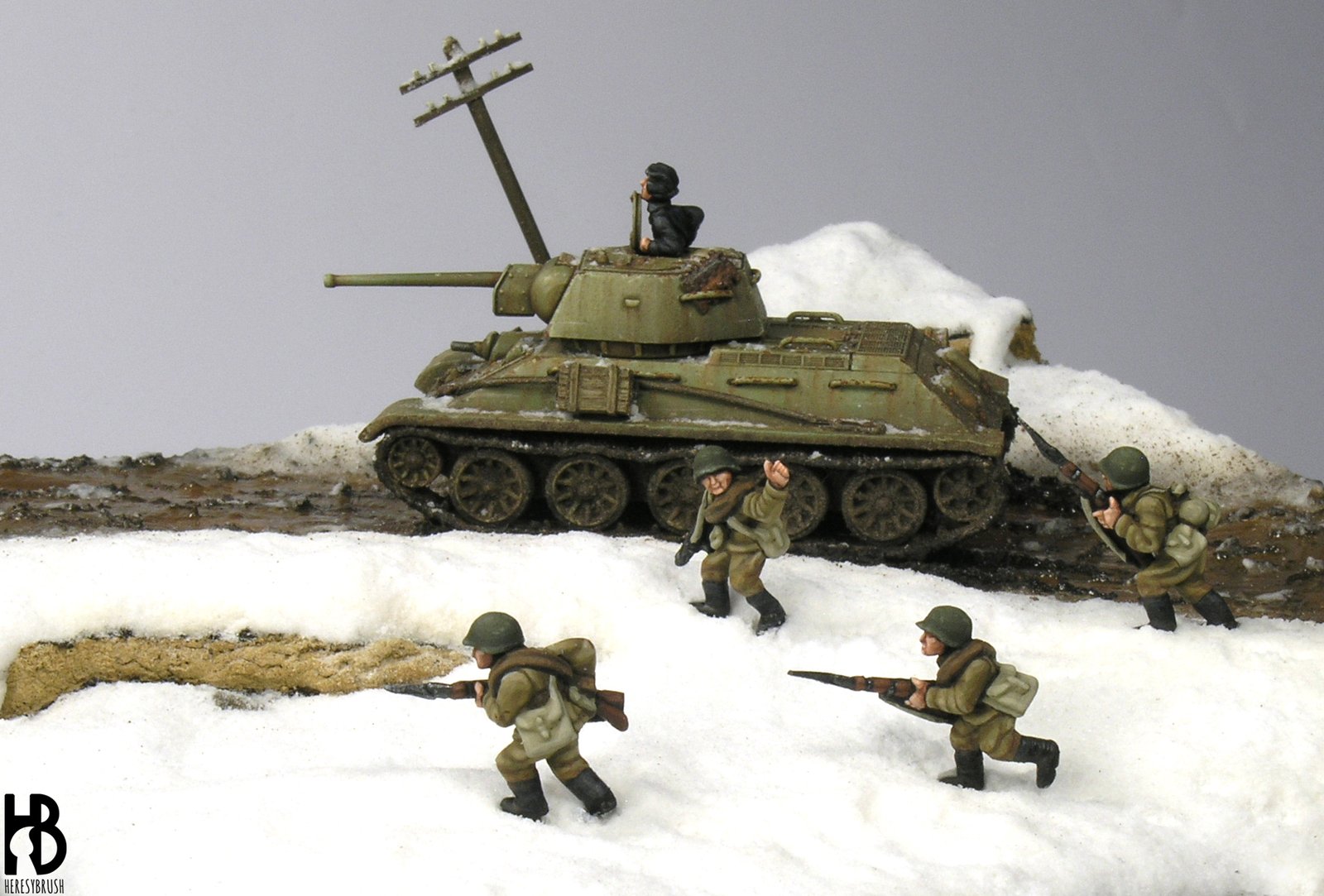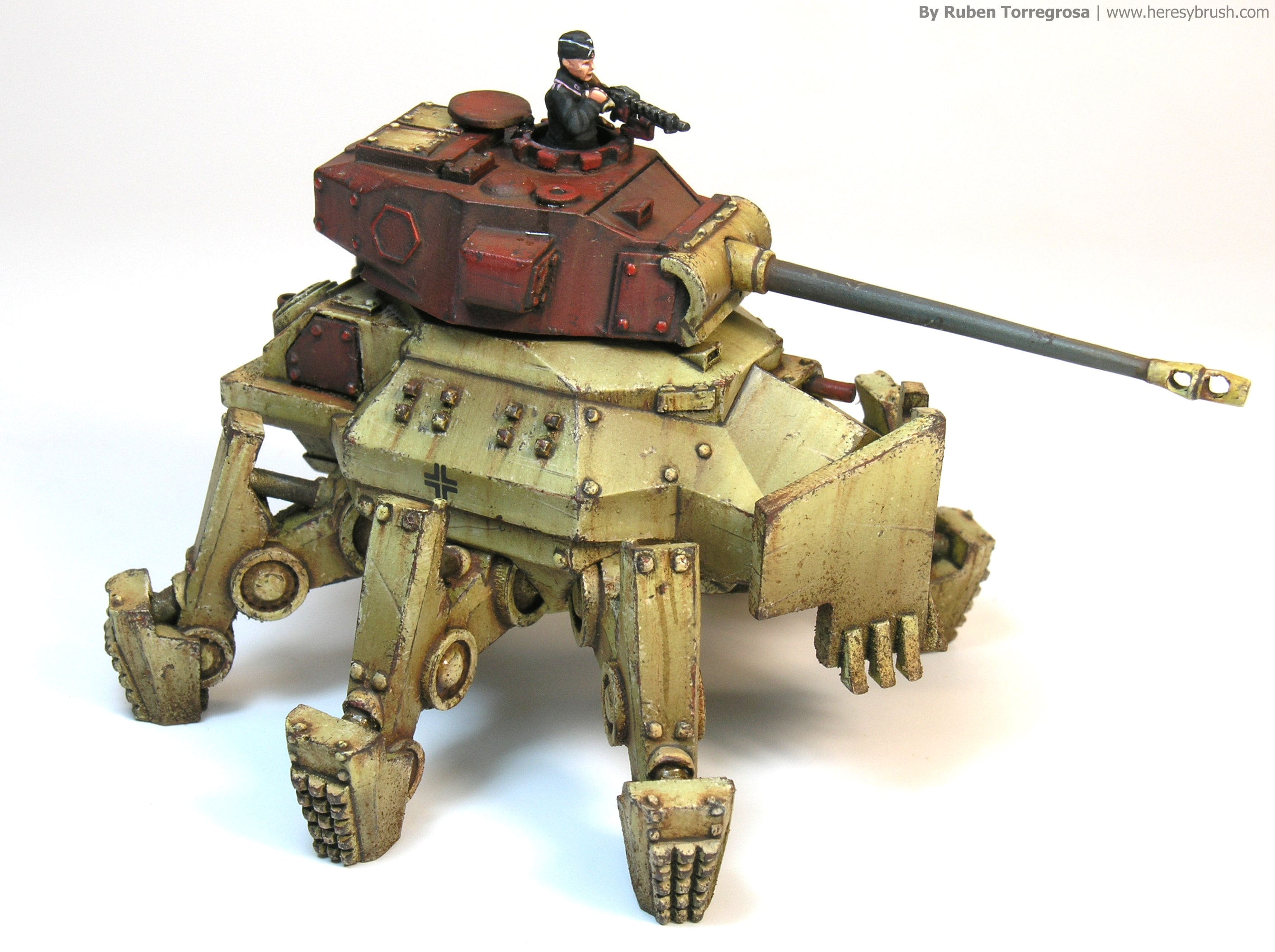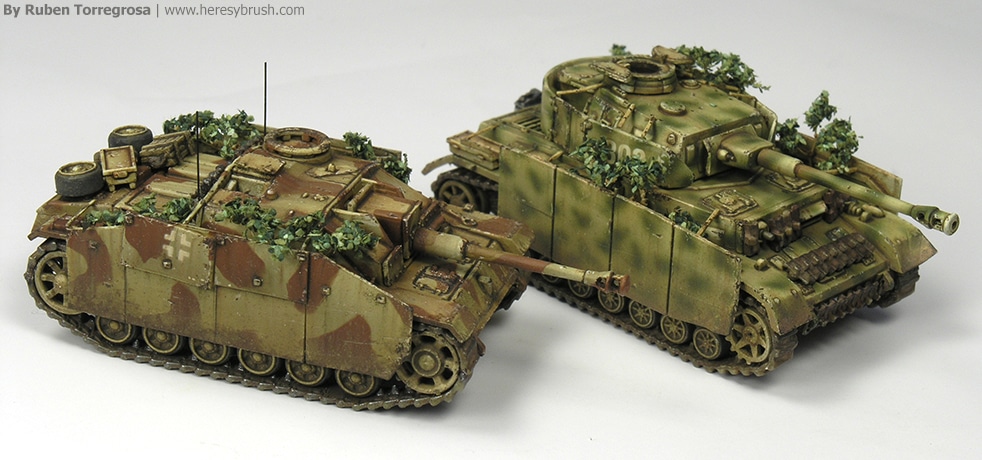I had the great opportunity to prepare a diorama for the cover of Wargames Soldiers and Strategy #90, where I have represented one of the probably most charismatic scenes of the last century wars, a trench raiding. More specifically, a German counter attack to take a trench section back. I wanted to share with you some details addressing the preparation of this diorama, although you will actually find more information inside the magazine. Additionally, in this very same WSS issue I have published a complete step-by-step painting guide of the Spanish 1898 colonial army, using the new miniatures from 1898…
Painting 15mm tanks: E25 tank hunter
I painted this German tank –one of my favorites WWII tanks, although it was a prototype– two years ago. It is a E-25 tank, produced in 15mm by Khurasan Miniatures. Although I have already published similar painting guides in my blog, I think that there is always something new to learn. The main topic of this article is the combination of the hairspray technique (or chipping effect fluid) with masks to create worn tritonal camouflage. Step 1 – Preparation We remove all imperfections from the model with a modelling knife and files. Then, glue some parts such as hatches, but…
Extreme weathering in 15mm: Mark IV
Almost two years ago I received a number of lovely 15mm WWI tanks from Battlefront Miniatures, and I started immediately working on a video-tutorial to explain how to paint a British Mark IV tank. I completed the first part of the tutorial regarding how to paint the base color and published the video (see below). Nevertheless, the poor quality of the video discouraged me from recording a second part. Instead, I put the tank into a box with the idea of buying a new video camera in the future. Unfortunately, I haven’t had the chance (nor the money) to buy…
Mud splatter effects in 15mm
While I am working on different projects, such as the new PaintingWar book focused on the Spanish Civil War, I have no time to prepare any tutorial for my blog. It is a pity. Nonetheless, you can follow my work in www.ModelBrush.com, a blog which I run with some friends. Strikingly, I have found an abandoned painting guide in my computer (that is, unpublished) and I would like to exploit it, starting by this “mud splatter effects in 15mm” tutorial. A very simple but very effective weathering effect. I have already commented this effect several time in my blog, but…
Spanish Civil War – How to paint a Spanish rural house
My last post was four months ago. Apologies. I’m still alive in the north! Indeed now I can say that I’ve seen the northern lights. I’ve achieved one of my dreams! Anyway, I have been painting a lot during this time. Different projects have occupied my free time. And probably the most important one is a new PaintingWar magazine focused on the Spanish Civil War (it has just released the issue 3 about the WWII US and Japanese armies, yopu can see here). The painting work and texts have been already sent, so in the following months it should be…
How to paint a British Sherman tank, and a new book: Painting Wargame Tanks
It’s a great pleasure to announce a new book published by AMMO of Mig Jimenez where I have actively been collaborating beside Mig Jimenez and Carlos Cuesta. The book contains 96 pages. After a short introduction about general materials and techniques (differences between acrylics and enamels, what is a filter or a wash, how to clean the airbrush…) you can find ten complete painting guides “step by step” of different tanks (mostly Germans, but there are also from USA and Soviet Union). The three firsts pretend to assimilate the knowledge showed in the introduction (we can say “basic level”), while…
Working with the terrain I
There are many ways to represent the sand base in our models or dioramas. We can just fix modeling sand with white glue and then paint it, we can use ready-to-use products, we can sculpt the texture, etc. In this post I want to explain another simple way using sands and clays from nature. You can find more information about how I preprared the vignete in the last issue of Wargames: Soldiers&Strategy. This way is not the best or the worst, it is just another way. I like it because I don’t have to paint the sand and therefore I…
Decals, transfer and stencils
Decals, transfer or stencils? Nowadays we have different possibilities when we want to put the Balkan cross in a Panzer IV, or the allied start in a Sherman. However, decals for vehicles are dominating the Wargames, thanks to games such as Flames of War or Bolt Action. But in large scales we can find other options, like transfer or stencils, and we can also use them for our 15mm models. Decals and transfer are too similar -a printed film above a paper-, but the application is different. Using decals, we wet the paper in first place, and when the decal…
How to paint 15mm tanks: German spider mech
While I am learning new hobbies (and sports) in this lovely Finish land, such as ice swimming, ice hockey or cross-country ski, I had enough time to paint and prepare a painting guide featuring an interesting Panzermech from ClockWork Goblin miniatures. I love this theme! In the past, I painted a couple of walkers from DreamPod9, and I currently attempt to paint as many E-series tanks as I can from Forged in Battle or Heer46. All in 1/100 scale or 15mm, of course!, my preferred scale. In this occasion, I’ve prepared a complete painting guide. However, I want to notice…
Weathering on horizontal panels in 15mm tanks
It’s very common to observe impressive streaking effects on vertical surfaces in Flames of War vehicles. However, we can’t apply the same effect on horizontal panels, because the gravity result is different, obviously. Here, I want to explain different ways or tools to work the horizontal panels. In vertical surfaces enamels and oils are usually used in this way: first we paint dots or vertical stripes with different colors. And then we blend all colors using a brush moistened in white spirit, by applying vertical strokes. The result are interesting vertical streaks. But these are illogical on a horizontal surface!.…
